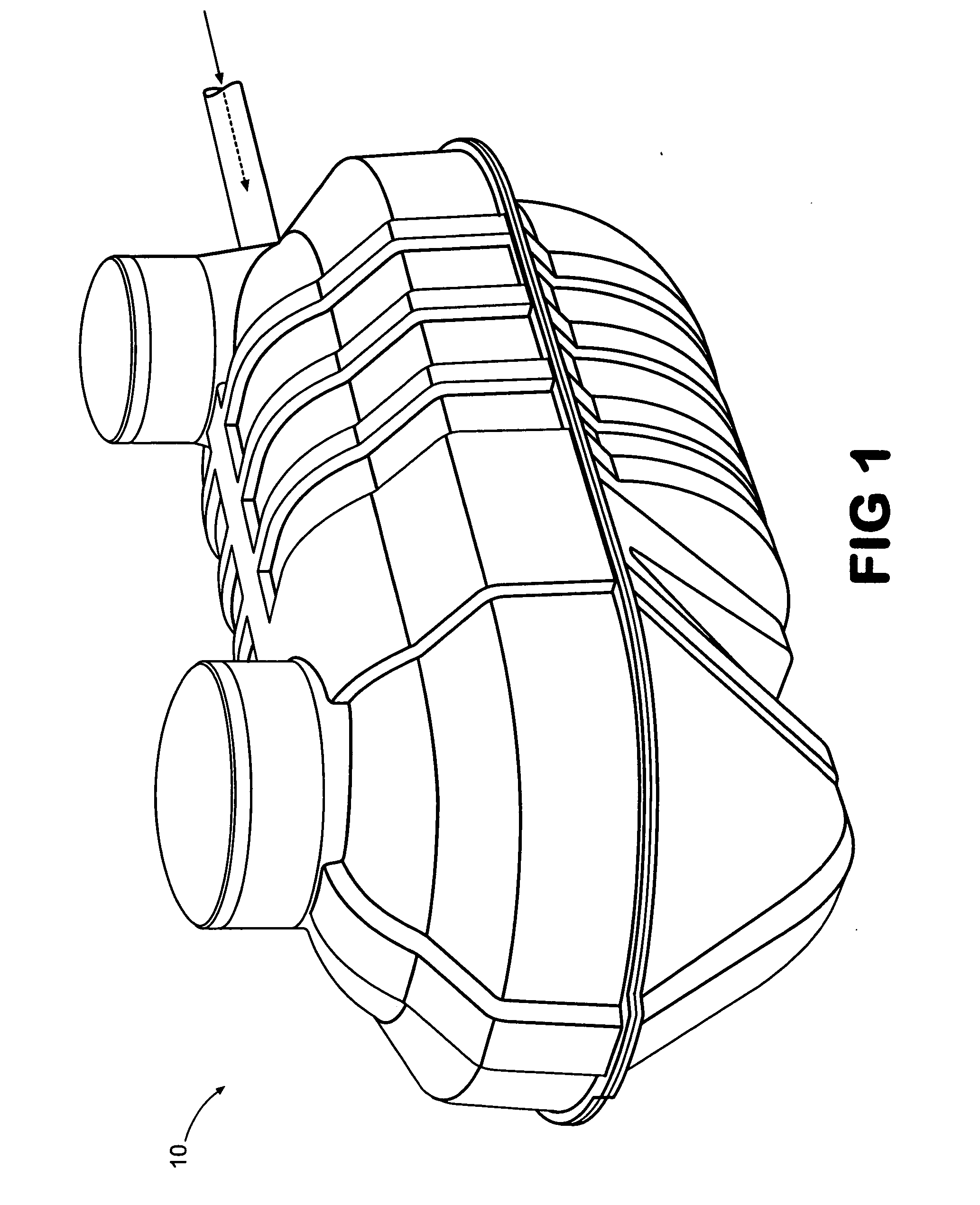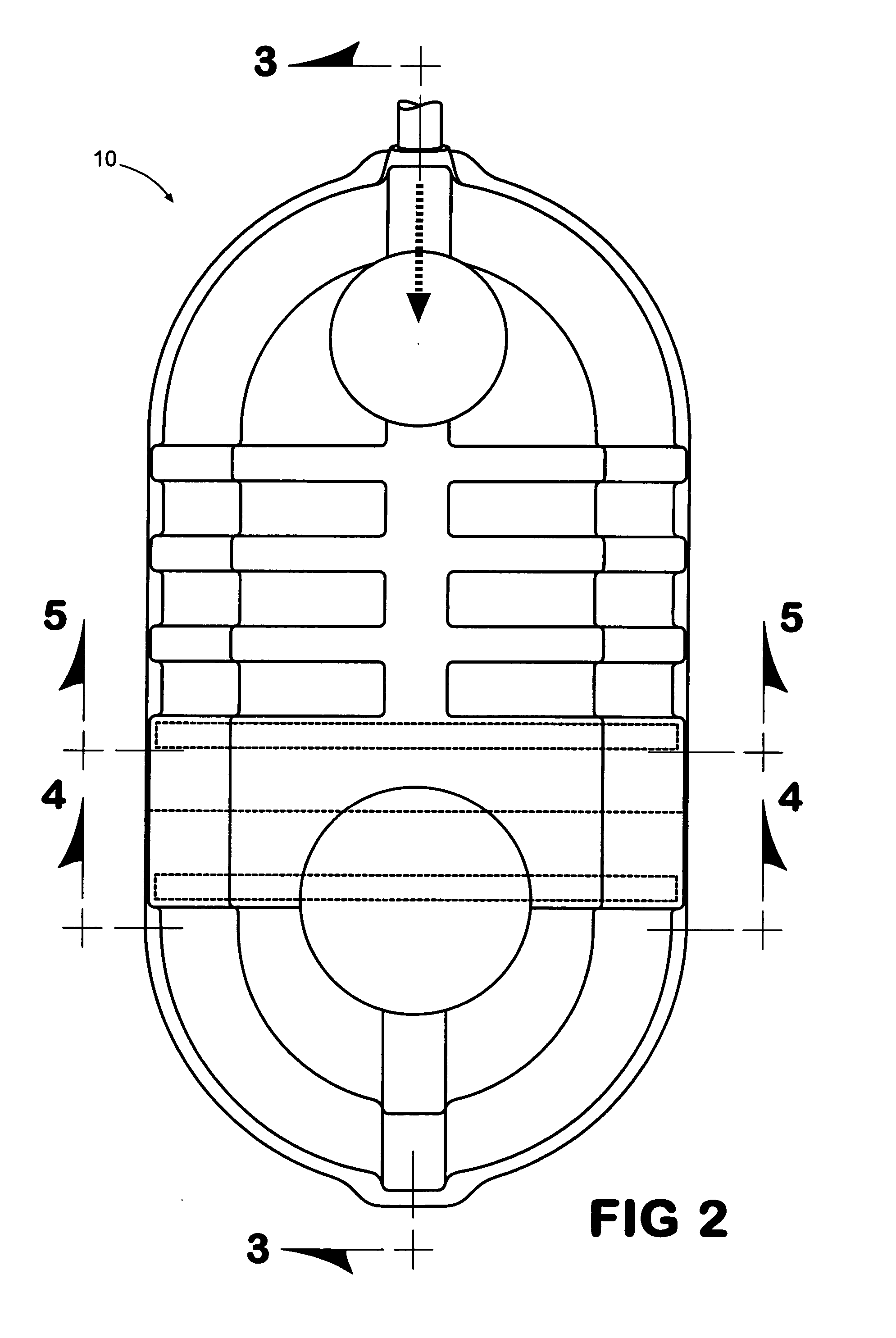The
discharge of untreated wastewater is not an option, since it gives rise to numerous environmental concerns.
Thus, when untreated wastewater is released into either aboveground or belowground streams and aquifers, the level of dissolved oxygen in the water of the streams and aquifers begins to deplete, which endangers the water bodies themselves and the resident
plant and aquatic life.
Over time, the
bacteria of the untreated wastewater will deplete the dissolved oxygen in the water to a level that will not support plant and aquatic life.
However, there are several problems associated with centralized treatment plants.
Thus, if a centralized treatment plant receives more wastewater on a particular day than what the plant was designed to
handle, problems are encountered.
As discussed above,
discharge of this untreated wastewater into bodies of water will eventually endanger and kill resident plant and aquatic life in the water.
Untreated wastewater also contains a number of
disease pathogens that are extremely harmful to humans.
For instance, untreated wastewater is one of the leading causes of
dysentery, which can be life threatening if not properly treated.
Thus, if a significant amount of untreated wastewater is discharged into a body of water, that body of water will become unavailable for human consumption.
On the other hand, if the treatment plant processes the larger-than-normal amounts of untreated wastewater, instead of diverting a portion into a body of water, the influx of untreated wastewater would wash away the bacteria populations used by the plant to treat the untreated wastewater, which would disrupt the entire biological treatment process of the plant.
Larger-than-normal amounts of untreated wastewater commonly occur because of growth in commercial and residential developments beyond what the centralized wastewater treatment plants were designed to accommodate and because of large amounts of rainfall in a short period of time.
Moreover,
sewage lines connecting residences and businesses to centralized wastewater treatment plants often develop breaks and cracks which allow rainwater and ground water to seep into the
sewage lines.
Often, these resources are not immediately available, and the
existing treatment plants are not able to properly treat the increased flow rate of untreated wastewater.
In more rural areas, construction of centralized wastewater treatment plants may be too expensive to build and maintain.
In addition, the cost of connecting residences and businesses in rural areas to a centralized treatment plant via sewage lines may be impracticable due to the greater distance between the those residences and businesses.
However, since the wastewater leaving the
septic tank has not been treated, the wastewater will be a detriment to the environment, as discussed above.
Furthermore, as solids build up inside the
septic tank, a phenomenon known as periodic upset may occur, causing solids to flow out of the
septic tank and into the field lines connected to the tank.
Eventually, these field lines will clog due to the buildup and carryover of solids.
When this occurs, the field lines have to be excavated and cleaned, which means destruction to a portion of the owner's property as well as increased expense to the owner.
Because the
percolation rate of soil determines the minimum lot size in a
subdivision using septic tanks, the requirement for larger minimum lots where
percolation is relatively poor reduces the maximum number of lots available in that
subdivision, and the resulting increase in the cost of those lots is passed on to the home buyers.
Since on-site
alternative treatment systems employ a static or fixed process to treat wastewater, they do not take into consideration these variable characteristics inherent in the treatment of wastewater and, thus, also fail to properly treat wastewater.
In a
continuous flow system, no wastewater leaves the
system unless wastewater enters the
system, and unlike at a centralized wastewater treatment plant, there is no operator available at these on-site treatment systems to determine and adjust to changes in flow rate of wastewater entering the systems.
Therefore, if a
residence or business does not generate any new wastewater for a period of time, such as for several hours or a couple of weeks, the wastewater in these on-site treatment systems remains in the systems because no new wastewater is available to push any wastewater out of the systems.
However, in
continuous flow systems, there is nothing available to separate the untreated wastewater from the treated wastewater or to distinguish wastewater that has not been treated from wastewater that has been treated, once the two are mixed.
Consequently, untreated wastewater is often discharged from
continuous flow systems because of this lack of control over what actually gets pushed out of the systems.
Therefore, wastewater leaving these on-site alternative systems is typically not sufficiently treated either because it was not aerated for a long enough period of time, or because it was aerated for too long a period of time, which causes the microorganisms in the systems to remain suspended in the wastewater as it is discharged from the systems.
Thus, the on-site alternative wastewater treatment systems that utilize the continuous-flow method to treat wastewater fail to maintain the correct biological balance needed to properly treat wastewater because the process utilized by the systems is not capable of changing to accommodate the variable characteristics of wastewater treatment including different wastewater flows, different times of wastewater generation, and different wastewater concentration.
Although these systems may control when wastewater is discharged from the systems, the systems do not control what is actually getting discharged from the systems because, like the continuous flow systems, there is nothing available in the pump systems to separate the untreated wastewater from the treated wastewater or to distinguish wastewater that has not been treated from wastewater that has been treated, once the two are mixed.
As a result, untreated wastewater is often discharged from the pump systems.
This failure to accommodate the changing characteristics of wastewater is another reason why available pump treatment systems often discharge improperly treated wastewater.
Moreover, pump systems are expensive to maintain because certain objects commonly found in wastewater often clog the pumps and valves required to control the flow of wastewater through the system, causing frequent maintenance and replacement.
Further, many of the on-site alternative wastewater treatment systems require the property owners to perform daily or periodic adjustments to the systems.
Such maintenance is expensive and also cumbersome to the property owner, who is typically inexperienced with regard to wastewater treatment.
Often, property owners are not able to determine what the problem is with the system because of the sophistication of the wastewater treatment process.
 Login to View More
Login to View More 


